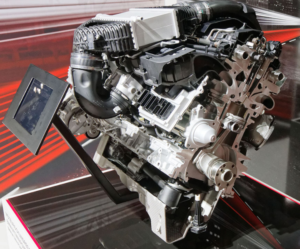There are many different types of turbochargers that are fitted into automobiles today. The most popular ones are listed below.
Variable Nozzle Turbine turbocharger or Variable Geometry Turbocharger

Usually, turbine on the admission side of air has mobile guide vanes that change position to give ideal stream conditions and a high turbine productivity rating, all through the engine speed go. This grants high lift pressure from low engine velocities and in effect a flatter torque curve and higher power.
The flexible guide vanes are constrained by the engine system, changing the flow of fume gases to the turbine to guarantee ideal proficiency. The outcome is that the engine reacts in a flash to the throttle, giving fantastic pickup and speed.
Waste-gate Turbocharger
In a waste-gate turbocharger, a waste-gate valve (which is a detour valve) is available to forestall the turbocharger from over-running and keeps the engine from boosting excessively by diverting a portion of the fumes to the turbine, to the exhaust, where they originated. This is required when the weight of the packed air from the blower wheel is a lot higher than the necessary weight. In this way, it avoids any mechanical fault coming about because of high weight and furthermore keeps up the weight of air. The waste-gate valve is impelled by a weight/pressure sensor.
Twin-scroll turbo or Twin-power turbo :

A twin-scroll turbocharger utilizes various channels from various chambers to push the exhaust turbine. Typically, the bigger channel coordinates a lot of fumes gases towards the external surface of the cutting edges of the turbine (or the bigger turbine if there should arise an occurrence of a twin turbocharger), and the smaller channel coordinates a limited quantity of high-speed exhaust gases towards the internal surface of the sharp edges of the turbine (or the smaller turbine in the event of a twin turbocharger).
Twin Turbocharging frameworks:
Sequential twin-turbo (when the two turbines are of the same size)
For a sequential twin-turbo system, for lower engine speeds just a single turbine will be functional, while at higher speed, both the turbines will be working. Since two small turbines are utilized instead of a bigger turbine, lag in the turbo is impressively decreased.
Equal/parallel twin-turbo (when the two turbines are of the same size)
In parallel twin-turbo, the work of turbocharging is divided similarly between the two turbochargers. Both the turbochargers work persistently, and the fumes gas is provided by equivalent number of chambers.
Sequential twin-turbo (when turbines are of various sizes)
In sequential twin-turbo with different turbine sizes, there are two turbochargers, one with a smaller turbine for lower engine paces and one with a bigger turbine for higher engine speeds. It is like a twin-scroll turbocharger.
Another sort of sequential turbocharger comprises of different turbines, where the pressure given by one turbine is less than the need pressure output. Here, the numerous turbines work together. The resulting turbines take the charge from the past stage and pack it further to keep up the necessary pressure output.







